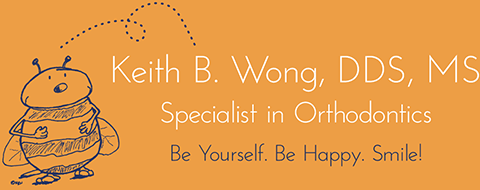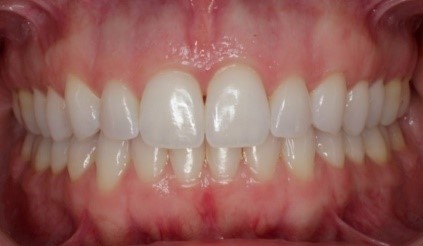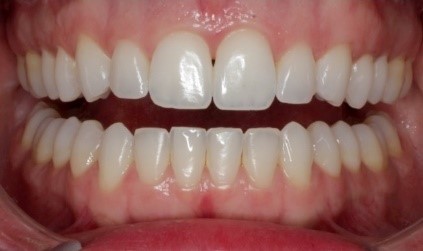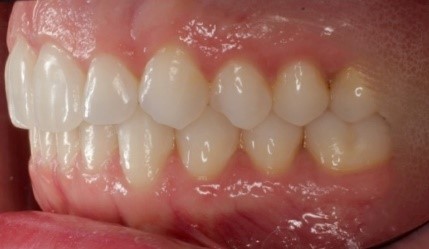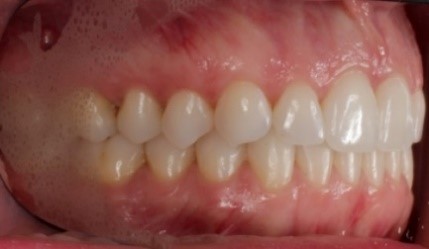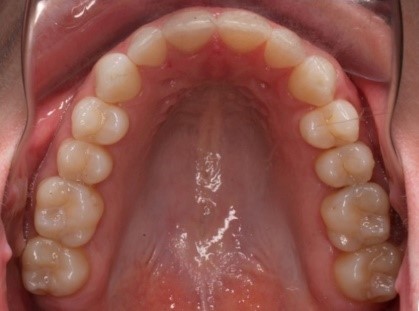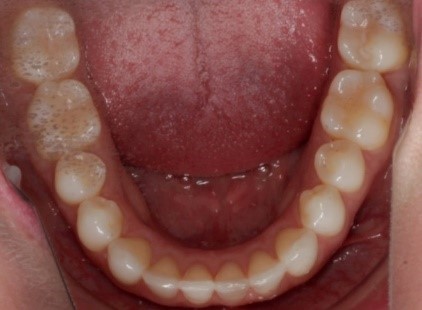Why See an Orthodontist for Invisalign
The use of Invisalign aligners is a popular and discreet alternative to traditional braces for correcting misaligned teeth, and since the expiration of the Invisalign company’s patents in 2017, many new companies have entered the clear aligner market. The competitive environment has led aligner companies, including Invisalign’s parent company, Aligntech, to aggressively encourage general dentists to attempt orthodontic treatment on their patients rather than refer their patients to an orthodontist who may not utilize that company’s aligners.
Sales representatives for the clear aligner companies attempt to allay the general dentist’s concerns over lack of orthodontic education and experience by touting the software sophistication of their “product” and advising to “treat only simple cases and refer all the more complex cases to an orthodontist.” This would seem reasonable except for two very important facts: 1. Software baseline treatment plans are formed on such limited information that a specialist in orthodontics must and does completely override those plans, and 2. The ability to recognize the level of complexity of an orthodontic case requires orthodontic training. It is not straightforward and is not revealed by the photographic scanning of the dentition used to create those baseline treatment plans. General dentists are being asked to learn clinical orthodontics on their patients.
Below we’ll explore why most orthodontic cases are NOT as straightforward as they may appear to the eye. and why consulting an experienced orthodontist for treatment with Invisalign aligners brings a wealth of benefits that go beyond just aesthetics.
“Simple” Looking Cases Are Often Not Simple
It’s a common misconception that if your teeth appear only slightly crooked or spaced, your case is simple and can be easily managed without professional intervention beyond the level of a general dentist. However, even seemingly minor misalignments can have underlying complexities; the most common is that of a skeletal imbalance of the upper and lower jaws.
Crowded Teeth or Spaces Between Teeth Often Indicate Underlying Jaw Misalignment
Almost no one has perfectly balanced jaws in all three dimensions of space. When the jaws develop during childhood, the teeth (which are passengers in each jaw) move or lean within their bony foundations to compensate for the fact that the upper and lower jaws grow at different rates and often mature into misaligned relationships. As a result, the teeth, when moving to maintain a functioning bite, develop crowding or spacing. This dental compensation continues throughout your life.
Attempting to Correct Crowded Teeth (or spaced teeth) Without Addressing Skeletal Balance Leads to Future Dental Problems and Instability
If the crowded teeth are straightened without taking the skeletal relationships into account, significant bite issues can develop that may lead to tooth wear, tooth chipping, root canals, gum recession, and even tooth loss. Short of these problems, treatment plans that do not account for skeletal relationships and the associated dental compensations lead to unnecessarily longer treatment times and more invasive treatments, such as extensive “smoothing” or interproximal reduction of the enamel of the teeth or unnecessary dental restorations (bonding, veneers, or crowns) to resolve less-than-ideal orthodontic results.
Specialized Tools and Knowledge are Required for All but the Most Simple Cases
An orthodontist’s comprehensive patient examination and evaluation of specialized orthodontic records is intended to identify issues that are not apparent. In addition to the status and position of the teeth, the orthodontist considers skeletal balance, bite alignment, airway issues, current and future facial aesthetics, periodontal health, and the types and complexity of needed tooth movements before making treatment recommendations that will result in a stable, healthy occlusion while enhancing both the smile and the face. This rigorous assessment ensures that treatment addresses all aspects of each patient’s unique situation.
Invisalign aligners can work wonders, but their successful use depends on proper treatment planning. If the patient’s case involves bite (occlusion) problems, skeletal imbalances, tooth rotations, or other issues, orthodontists are able to develop a comprehensive plan to achieve optimal results using Invisalign aligners in conjunction with helpful auxiliaries to increase efficacy and shorten treatment length. Their expertise ensures that treatment is effective and minimizes treatment length and the risk of complications.
Access to Aesthetic Treatments Beyond Invisalign
Orthodontists are able to utilize appliances other than aligners that, depending upon the movements required, may prove to be both more efficient and more convenient for the patient. While Invisalign aligners can be very effective—I successfully treat hundreds of patients per year using aligners—aligners have a short range of motion, unlike fixed appliances, and have greater difficulty bringing about root movement, both of which lengthen treatment time and may compromise its result. Your or your child’s orthodontic treatment may benefit from complementary methods that accelerate the treatment process. Alternatively, your orthodontist may recommend a different tool altogether, such as the Brava lingual appliance, which is fixed behind the teeth and, therefore, completely invisible to the onlooker. An example of the former would be limited clear braces on a small number of teeth to accomplish complex movements beyond the capabilities of clear aligners, allowing a patient who had been deemed “not a good candidate for Invisalign” to become an ideal candidate for aligner treatment. By combining their expertise with innovative tools and techniques, orthodontists can significantly reduce treatment times while delivering aesthetically pleasing and healthy results.
Under the guidance of an experienced orthodontist, Invisalign aligners can be used safely and effectively; issues that may not be apparent can be accurately diagnosed and treated. An orthodontist possesses the knowledge, tools, and expertise to address even the most intricate cases, ensuring the effectiveness of your treatment, and offers access to additional aesthetic appliances that potentially shorten treatment time and enhance the overall outcome for the most beautiful smile, optimal oral health, and long-lasting results.
Most orthodontists offer complimentary examinations. I encourage you to seek consultations before deciding upon a practitioner for orthodontic work regardless of the treatment type.
Does Treatment with Invisalign work?
Yes, but the answer is complicated. When introduced, Invisalign aligners were seen as an innovative and technically sophisticated tool with a certain aesthetic elegance, not unlike an iPhone; therefore, many have assumed that Invisalign is similar to an iPhone in that where it is acquired is unimportant. In reality, Invisalign is of greater similarity to a surgical robot or a Boeing aircraft—technically advanced, yet dependent upon the experience and judgment of the operator. However, given that Invisalign is a commercial product, developed and marketed directly to the public and that the chance of morbidity is non-existent, the threshold of qualification to become an Invisalign provider has been loosely regulated. This is a complicating factor in the performance of aligner/Invisalign treatment due to several issues.
Firstly, the Invisalign technology has been marketed to both orthodontists and general dentists under the mistaken belief that the computer-programmed Invisalign baseline is sufficiently sophisticated to produce satisfactory results in non-complex cases without significant doctor modification. This has not proven to be true. The Invisalign baseline considers only the position of the dentition without reference to bone and soft tissue status and relationship, factors that greatly impact treatment planning, the sequencing of tooth movement, and the overall impact of treatment on the face and smile. Secondly, the mechanics of the Invisalign aligners (the capacity for, and application of, force) are unique and require that the practitioner have a comprehensive understanding of tooth movement and repositioning. Thirdly, a further complication for non-orthodontists is that their ability to determine the relative complexity of an orthodontic case and treatment plan is limited. These skills are developed not through the general education of the dentist but through the two to three years of post-doctoral education and residency in orthodontics and subsequent specialized practice of the orthodontist.
The fact that the question remains, “Does Invisalign work?” points to the issues discussed above and the resulting inconsistency in treatment outcomes. A significant number of Invisalign cases have been and continue to be attempted by those who do not have the adequate diagnostic skills, mechanical understanding, and/or experience to complete these treatments. However, when utilized by an orthodontic clinician who is both experienced in the specific biomechanics associated with aligner treatment and who has the diagnostic ability to recognize appropriate clinical indications, the use of Invisalign aligners is very effective and reliable.
Do Invisalign aligners only work in certain cases?
Invisalign aligners are one of several tools that an orthodontist may use to move teeth, as are fixed appliances, with each tool having both advantages and disadvantages. Certain tooth movements are not accomplished effectively by Invisalign aligners. Due to the specific mechanical properties of the Invisalign appliance, which differ substantially from that of fixed appliances such as precision braces or the Brava lingual appliance, aligners are a poor choice for moving large rooted teeth and do not rotate teeth efficiently. In such cases where aligners are not appropriate, difficult movements may be accomplished using limited clear or tooth-color braces (often, on a few teeth for a brief period), resulting in a case that can then be successfully completed with Invisalign, or by using an alternative appliance such as Brava. By integrating modalities, experienced orthodontists are able to treat a wide variety of cases with Invisalign and achieve ideal results.
Seeking Invisalign Aligner Treatment
Invisalign aligners are very thin, clear, removable, and intimately approximated to the teeth; they are extremely “aesthetic” compared to traditional or even clear braces.
Clinical Advantages of Aligner Treatment
In certain cases the use of Invisalign presents a clinical advantage, such as (1) when enhanced control of teeth is required—Invisalign is quite effective in creating space of exact size, e.g. where precise widths are needed for post-orthodontic restorations, (2) when braces would not remain on the teeth well (e.g. patients with numerous crowns or veneers, patients with abnormal tooth enamel), (3) when access for particular dental procedures during orthodontic treatment is important, (4) when indications of root resorption necessitate the isolation of certain teeth, (5) when there exists an anterior open bite in which the patient cannot bite the front teeth together (e.g., to incise lettuce); and (6) when there exists a deep bite in which there is an excessive vertical overlap of the upper and lower incisors causing wear to the teeth or gums.
Does Invisalign cost more than braces?
Fee structures vary across the country. In some regions, such as our own, Invisalign is priced similarly to fixed appliance treatment.
Does Invisalign treatment take longer than braces?
Cases that include movements difficult for Invisalign to accomplish, thus necessitating limited fixed appliances in a hybrid Invisalign/fixed appliance treatment, experience an overall duration similar to that of fixed appliance treatment. Certain types of cases, however, are best and more quickly treated with fixed appliances alone.
What is Involved in Initiating Invisalign Treatment?
Each patient, regardless of treatment type, should receive a comprehensive examination of his or her facial structures (hard and soft tissue), teeth and dental alignment, jaw joint (temporomandibular joint), periodontal structures (hard and soft tissue), and a meaningful discussion covering his or her goals for treatment and other salient issues. Invisalign patients will have diagnostic records taken including a digital intraoral scan (which will later be used to create aligners). These records are sent to Aligntech (the parent company of Invisalign) with an initial treatment prescription provided by the orthodontist. To initiate the aligner creation process, a baseline treatment plan is generated by Invisalign software. The software used for this preliminary treatment plan cannot, however, determine what is clinically realistic or advisable; therefore, this treatment plan is extensively modified by the orthodontist, who is experienced in both diagnostics and Invisalign biomechanics. (The preliminary treatment plan would commonly lead to case failure if implemented without modification: this is why I recommend that Invisalign treatment be sought from a qualified practitioner [see “Does Invisalign Work?” above].) Once the orthodontist has sufficiently modified the treatment plan for the case in question, he or she will approve the plan (known as a Clincheck) and the construction of aligners will commence. Aligners arrive two to three weeks after the taking of diagnostic records.
What happens when I receive the Invisalign aligners?
At the first appointment, the aligners will be checked to confirm fit and you will be instructed on their placement and removal. The rate of change from one aligner to the next will also be discussed. Two cases will be provided and you will be asked to store all of your used aligners in their individual packages in case any should be needed in the future. You will also be shown how to clean the aligners and given tips to help you incorporate the aligners into your everyday life. This is an exciting and relatively short appointment.
What will I notice once I begin wearing the aligners?
First, you may be surprised at how difficult it is to see the aligners once on and how closely they fit the teeth (the fit will become even closer as your teeth adjust to the aligners). You will probably note a mild increase in salivation because your mouth senses something new; this phenomenon usually lasts one to two days. As you speak while wearing the aligners, we advise that attention be brought to any changes in your speech; if such changes occur, we recommend practicing those sounds that require adaptation. Speech adaptation usually takes a few days, as well.
Is Invisalign treatment painful?
The perception of discomfort or pain varies widely among individuals, but, given that orthodontic tooth movement requires force to elicit a biological response, initial discomfort will be experienced. However, due to the nature of the force applied by aligners, patients who seek retreatment with Invisalign tend to report less discomfort as compared to their prior treatment with braces. Nevertheless, there is likely to be an initial period of low-level discomfort around the teeth when the dentition goes from unperturbed to orthodontically mobile. Once the Invisalign orthodontic process begins, however, this discomfort lessens.
How many hours per day are the Invisalign aligners to be worn?
The ideal amount is 22+ hours per day. Patients are advised to remove the aligners only to eat, clean their teeth, clean the aligners, and speak or perform in special situations. Aligners should be worn at all other times, including when asleep. The number of times the aligners are removed each day should be minimized. Due to the biomechanics of tooth movement, changes brought about through six hours of force on the teeth revert in only two hours when that force is absent.
Does Invisalign treatment involve anything that is attached to your teeth?
At some point in treatment, most patients are provided with small, tooth-colored attachments that have very specific shapes and are positioned precisely at certain spots on designated teeth. These attachments will correspond to similarly shaped forms in the aligners to allow specific force vectors to be delivered to each tooth to bring about precise patterns of orchestrated tooth movements through space and time. In addition, auxiliaries such as bonded buttons or hooks may be used in concert with the aligners to allow the use of other force-generating units, such as elastics.
What if I have a nightguard/bite plate?
Your nightguard/bite plate will not fit your teeth as they begin to move. Therefore, you will be asked to wear the aligners at night. The aligners (which cover the chewing surfaces of the teeth) will serve as a new nightguard/biteplate. Because each set of aligners is typically worn for only two weeks, even vigorous tooth grinders will not wear through the material.
What if I have crowns, bonding, or veneers?
In general, Invisalign aligners are better suited for those patients with significant dental work of this type because these restorations present a more difficult bonding surface than the natural tooth. Invisalign aligners work equally well with restored and unrestored teeth.
What if I have bridges or implants?
If fixed teeth exist, such as implants or ankylosed teeth (teeth that have fused to the bone, usually after trauma), these teeth must be considered in the overall treatment plan whether that treatment involves Invisalign, precision braces, or the Brava lingual appliance. If these teeth are to remain in their present position at the conclusion of treatment, they can be extremely helpful “anchors” from which to move other teeth. If these bridges or implants would ideally be repositioned, the decision must be made whether or not to do so as part of the comprehensive treatment plan. In the case of bridges that must be repositioned, the abutment teeth can be moved individually after the pontic(s) are removed. (Pontics are the synthetic teeth between the abutting teeth.)
Should I have a dental check-up before Invisalign?
Yes. It is important that dental issues such as decay, gum disease, infection, tartar build-up, or any procedure that would necessitate altering the shape of any tooth be completed before your aligners are fabricated. A very intimate fit of the aligners results in the most efficient and effective transfer of orthodontic forces and, therefore, the most ideal orthodontic result. In addition, the dental check-up allows your dentist and orthodontist to collaborate in planning your overall long-term treatment relative to aesthetics, function, and health.
Can I wear the aligners just at night for more weeks and get an ideal result?
No. The orthodontic process is a biologic reaction to the presence of force; therefore, when the stimulus of force is removed, aspects of the biologic (and orthodontic) process begin to reverse. To complicate matters, different teeth will move and revert at different rates. This means that each tooth will shift to a different stage in treatment and no single aligner will fit all of the teeth as well as it should. If this “non-tracking” is caught early on, extremely consistent wear of the best-fitting aligner can recapture the dentition. If the situation has gone too far, rescanning is necessary to create a new treatment plan and set of aligners; this lengthens treatment and, at some point, an additional fee will be charged.
The best advice is to commit to the recommended level of aligner wear—22+ hours per day. If this seems unlikely, a viable alternative is to consider the use of fixed appliances such as the invisible Brava lingual appliance, which fits behind the teeth, or precision, LightForce 3-D printed, tooth-color brackets and wires. The convenience of fixed appliances includes the absence of loose parts to handle and the ease of maintenance (the appliance itself is cleaned when brushing the teeth and is not removed and repositioned when eating). Once the initial period of adjustment has occurred, a fixed-appliance protocol is typically found to be very satisfactory.
Are Invisalign Aligners for Adults Only?
No. In fact, teenagers often make the best patients. The biologic fact that teens have active bone metabolism, facial growth, and tooth eruption means that their dentition is quite malleable. This makes the teenager an excellent candidate for Invisalign (except in such cases that Invisalign is not diagnostically recommended). In assessing the appropriateness of Invisalign for a teen, one must consider both the orthodontic situation and the patient’s level of dedication and commitment to achieving treatment goals. Many teens are highly motivated, responsible, and willing. For this type of teen, Invisalign is not only more aesthetic and convenient, it also allows for better oral hygiene and less interference with daily activities (e.g. athletics, playing certain musical instruments, or eating specific foods) than braces. For the peace of mind of parents, in our practice, it is made clear to the teen that we are committed and obligated to the best orthodontic result possible. Therefore, if aligner wear is insufficient, the treatment will revert to traditional braces. While this type of motivation is typically not needed for the adult patient, it can be very helpful in solidifying the teen’s commitment to consistent wear and hygiene.
If neither braces nor aligners are deemed appropriate, the lingual Brava appliance which is invisible to onlookers may be the best alternative.
Conclusion
Much of this guide has focused on the advantages of seeking treatment with an orthodontist because that is the information missing from advertisements and dental office brochures. Invisalign aligners are a tool, not a treatment. They are a tool that can be used effectively when employed by a skilled and experienced orthodontic practitioner who specifies the entire treatment plan to correspond with the biological idiosyncrasies of the face and dentition. Orthodontists provide a suite of options and will plan your treatment to meet unapparent challenges both today and in the future. I encourage you to seek consultation for yourself or your child with an experienced orthodontist before seeking treatment; most offer complimentary examinations.
For additional information, see my blog posts
If you have further questions or wish to explore treatment, I would be pleased to work with you. Contact my office, Dr. Keith B. Wong, DDS, MS, Specialist in Orthodontics, or use the buttons below to schedule a complimentary examination or begin a virtual consultation.
